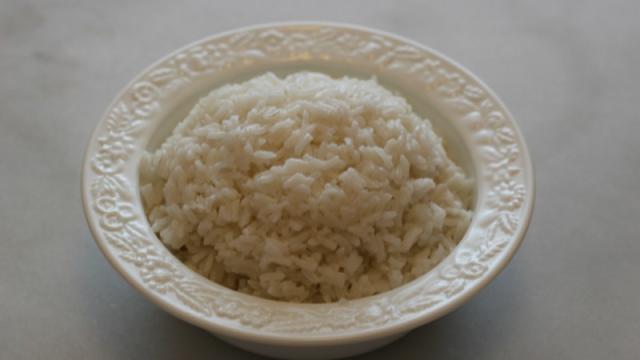On a scale from “1” to “listeria” the amount of stomach trouble I would expect a bowl of rice to give me falls around a “2”, but apparently the seemingly innocuous grain can inflict a lot of pain if it isn’t stored properly.
Photo by Claire Lower.
According to Benjamin Chapman, Food Safety Specialist from North Carolina State University, cooking rice doesn’t necessarily kill all the pathogens that may be lurking about. “The issue with rice,” he explained to me over email, “is that one pathogen, Bacillus cereus, is quite prevalent in dried rice (some sources say ubiquitous), likely as spores. The spores may survive cooking. If cooked rice is subsequently held at room temperature, the spores can come out of their protective form, germinate, and vegetative forms multiply. The cooked rice environment provides a lot of water and nutrients for growth. As a by-product of growth, they create a couple of toxins, including a heat-stable one.”
Though it’s unclear exactly how many cases of food poisoning Bacillus cereus is responsible for, one study estimated an incidence of 63,623 cases in the US per year. Unfortunately data is limited in Australia, as notifying the government of food poisoning by Bacillus cereus is not required. Approximately 4.1 million people suffer from food poisoning in Australia annually, including a number of cases caused by Bacillus cereus.
Luckily, popping any leftover rice in the fridge after you’re done enjoying your dish should keep you safe. According to this article from Epidemiology and Infection, boiled rice should “either be kept hot” (above 63C) or “cooled quickly and transferred to a refrigerator within 2 hours of cooking”. In fact, the most dangerous temperature zone for rice to hang out in is “room temperature to warm” range (15-50C).
Beyond refrigerating any home-cooked rice, a sense of vigilance is helpful when dining out. According to food scientist Donald Schaffner of Rutgers University, some restaurants “cook up a large batch of rice, hold it at room temperature all day”, and then take portions from the batch as needed. “Because Bacillus makes a heat stable toxin,” he explained, “this is not a best practice, and has led to outbreaks in the past.” “Heat stable” means that the toxin can survive boiling and, once the rice is cooled into the “danger zone” of 15-50C, the bacteria can multiply, making even more of the toxin. Sushi rice, he noted, shouldn’t be a problem as vinegar is added to lower the pH, allowing it to be held safely at room temperature.
In short, the best way to keep yourself and your loved ones safe from Bacillus cereus and the havoc it wreaks is to refrigerate any leftovers within two hours of cooking, and check with your favourite rice-serving restaurants to find out how they prepare and store each batch. After all, rice is supposed to help your tummy, not send it into turmoil.

Comments
2 responses to “Leftover Rice Could Make You Very Sick”
Does it say anything about the effect of reheating the rice by microwave first before eating it?
wow. my wifes mother was born in Burma and in the 12 years ive known here, when she makes rice with curry, she just leaves the rice on the stove, in a pot, with a plate over the pot and then just uses is later that day or the next day. ha ha. villagers, gonna village.
Yeah this happens ALL over Asia too, especially China so I call BS on the article (or Asian people have developed an immunity over time).